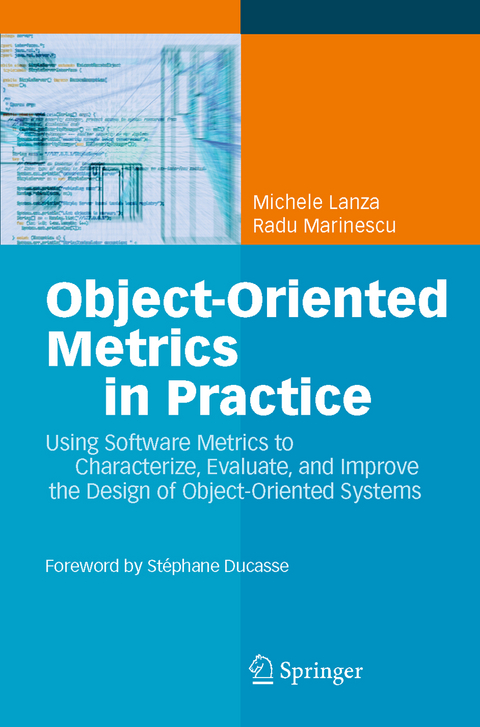
Object-Oriented Metrics in Practice
Springer Berlin (Verlag)
978-3-642-06374-9 (ISBN)
Metrics are paramount in every engineering discipline. Software engineering, however, is not considered a classical engineering activity for several reasons. In general, if a software system is seen to deliver the required functionality, only few people if any care about the internals. Moreover, defining, understanding and applying software metrics often looks like an overly complex activity, recommended only to 'trained professionals'.
Lanza and Marinescu demystify the design metrics used to assess the size, quality and complexity of object-oriented software systems. Based on statistical information from many industrial projects and generally accepted semantics they deduce many single and combined threshold values. They show in detail how to identify collaboration and classification disharmony patterns in code, how to visualize their results using the freely available CodeCrawler visualization tool, and how to devise possible remedies.
The combination of theoretically sound results and practically tested procedures and solution paths makes this book an ideal companion for professional software architects, developers and quality engineers. The pattern-oriented description of disharmonies offers easy access to detecting shortcomings and applying solution strategies.
"This well-written book is an important piece of work that takes the seemingly forgotten art of object-oriented metrics to the next level in terms of relevance and usefulness." Richard C. Gronback, Chief Scientist, Borland Software Corporation.
Michele Lanza is an Assistant Professor at the University of Lugano, Switzerland. His main research interests lie in software (re)engineering and software evolution with a special focus on software visualization and metrics. He was the creator of CodeCrawler, a freely available language-independent software visualization tool. His Ph.D. work won the Ernst Denert Software Engineering Award in 2003. Michele is a member of the ACM and IEEE.
Facts on Measurements and Visualization.- Characterizing the Design.- Evaluating the Design.- Identity Disharmonies.- Collaboration Disharmonies.- Classification Disharmonies.
"This well-written book is an important piece of work that takes the seemingly forgotten art of object-oriented metrics to the next level in terms of relevance and usefulness." Richard C. Gronback, Chief Scientist, Borland Software Corporation.
"This well-written book is an important piece of work that takes the seemingly forgotten art of object-oriented metrics to the next level in terms of relevance and usefulness." Richard C. Gronback, Chief Scientist, Borland Software Corporation.
| Erscheint lt. Verlag | 12.2.2010 |
|---|---|
| Vorwort | S. Ducasse |
| Zusatzinfo | XIV, 207 p. |
| Verlagsort | Berlin |
| Sprache | englisch |
| Maße | 155 x 235 mm |
| Gewicht | 340 g |
| Themenwelt | Informatik ► Software Entwicklung ► User Interfaces (HCI) |
| Informatik ► Weitere Themen ► Hardware | |
| Mathematik / Informatik ► Mathematik ► Finanz- / Wirtschaftsmathematik | |
| Schlagworte | Class • classification • CodeCrawler • Complexity • Design • Design Metrics • Development • object • object-oriented software development • Semantics • Software • software architecture • Software engineering • software metrics • Software Visualization |
| ISBN-10 | 3-642-06374-8 / 3642063748 |
| ISBN-13 | 978-3-642-06374-9 / 9783642063749 |
| Zustand | Neuware |
| Haben Sie eine Frage zum Produkt? |
aus dem Bereich


